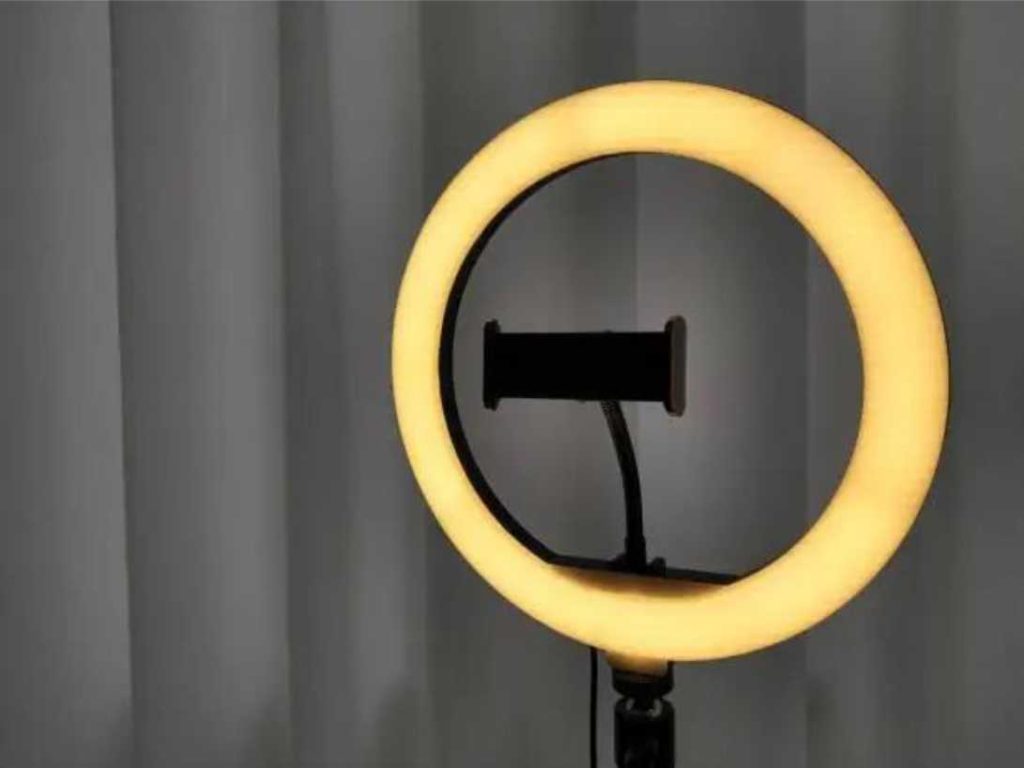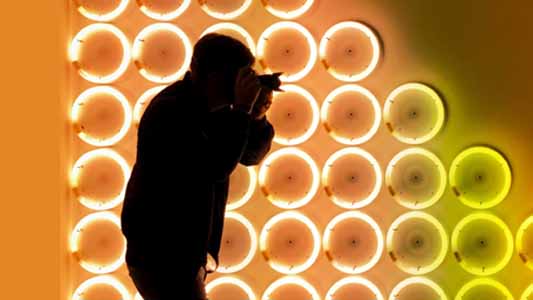Introduction: A New Era of Employee-Centric Workspaces
Human-Centric Lighting (HCL) represents a shift in workplace design, creating lighting environments that align with human circadian rhythms. This approach is particularly beneficial in commercial and industrial settings, where productivity, employee satisfaction, and energy efficiency are priorities. Leading companies across sectors, such as healthcare, IT, and retail, are already embracing HCL to improve workplace conditions and leverage its advantages.

Key Takeaways
• Enhanced Well-being: HCL systems improve mood and mental health.
• Increased Productivity: Boosts alertness and cognitive functions in workplaces.
• Health Benefits: Supports natural sleep-wake cycles.
• Energy Efficiency: Reduces electricity consumption and operational costs.
• High Initial Costs: Advanced technology can be expensive.
• Maintenance Needs: Requires ongoing maintenance and calibration.
• Complex Integration: May require specialized knowledge for implementation.
• Promising Future : Advancements in smart lighting and IoT integration.
Advantages of Human-Centric LED Lighting in Business Settings
Enhanced Productivity and Focus
• Lighting and Alertness: Studies demonstrate that exposure to bright, cool lighting in the morning helps increase focus and cognitive function, essential for industries with demanding workloads, like tech and finance.
• Industry Example: SAP Labs India integrated HCL in its Bangalore headquarters to enhance employee productivity and well-being. The lighting system, tailored to mimic natural light patterns, supports employee energy levels and reduces eye strain, especially in extended work environments. This investment has led to improved employee performance and lower stress levels.
Improved Physical and Mental Well-being
• Better Sleep Cycles: By aligning artificial light with natural daylight patterns, HCL improves employees’ sleep cycles, enhancing mood and focus during the workday.
• Industry Example: Philips Lighting implemented HCL in their offices and reported significant improvements in employee morale. By mimicking natural light patterns, the lighting system has helped improve employee alertness, reducing fatigue and supporting overall mental health.
Energy Savings and Cost Reduction
• Efficiency of LED Technology: HCL systems consume less energy than conventional lighting, and customizable settings allow for savings based on daylight and occupancy levels.
• Industry Example: Deutsche Bank’s London Office implemented an advanced HCL system, which not only improved the lighting quality for employees but also reduced energy costs by 25%. With automatic adjustments based on occupancy and natural light availability, the HCL system has contributed to significant cost savings.
Boosted Employee Retention and Satisfaction
• Attracting and Retaining Talent: Companies prioritizing employee well-being through HCL are more likely to attract and retain top talent.
• Industry Example: Jaguar Land Rover introduced HCL across its design centers in the UK to enhance workplace conditions and retain top design talent. By creating an optimized lighting environment, the company noted increased job satisfaction and engagement among employees, particularly those in creative roles requiring extended focus and attention to detail.

Challenges and Limitations of Implementing Human-Centric Lighting
High Initial Investment Costs
Industry Example: Google’s New York Office integrated HCL at a high cost but justified it as part of its long-term strategy for employee health and sustainability. The company acknowledges that HCL installation was initially costly, but the investment aligns with their commitment to employee well-being and sustainability goals.
Complex Integration and Setup
Industry Example: Amazon Fulfillment Centers have begun experimenting with HCL systems, although implementation challenges in large spaces with diverse lighting needs present a hurdle. The complexity of setting up HCL in large fulfillment centers highlights the need for customization to suit different work areas and varying employee schedules.
Maintenance and Technical Support
Industry Example: Cisco has rolled out HCL in several global offices but noted the need for ongoing technical support and maintenance. The company has invested in staff training to manage the lighting systems effectively, addressing the need for specialized knowledge in maintaining HCL systems.
Survey Insights: Human-Centric Lighting Trends in the Indian Market
HCL adoption is rising in India, especially among large corporations in IT, healthcare, and hospitality sectors.Industry Example: Infosys introduced HCL systems in their Bangalore campus to improve energy efficiency and promote employee well-being. The initiative has been well-received, with surveys showing that over 70% of employees feel more alert during the day, and 25% reported improved sleep quality due to optimized lighting at work.
Adoption Rates by Sector:
• IT Sector: Adoption in IT is around 50% in metro cities, with large companies implementing HCL as a part of their sustainable office designs.
• Healthcare Sector: Hospitals are increasingly adopting HCL in patient care areas to promote healing, relaxation, and a comfortable environment.
• Manufacturing: Though adoption rates are lower in manufacturing, Tata Steel has been testing HCL in high-stress areas like control rooms to support shift workers’ circadian rhythms.
Indian Market Survey Data
The Indian LED market has been growing rapidly, driven by government initiatives and increasing awareness of energy efficiency. According to ELCOMA, the Indian LED market was expected to reach INR 216 billion by 2020, with a CAGR of 41%. The adoption of HCL in India is also on the rise, particularly in commercial and industrial sectors, as businesses recognize the benefits of improved employee well-being and productivity.
Future Prospects
The future of HCL looks promising, with advancements in smart lighting systems and IoT integration. Personalized lighting solutions that adapt to individual preferences and activities are on the horizon, promising even greater benefits for users1. As technology evolves, the cost of HCL systems is expected to decrease, making them more accessible to a broader range of users2.
Applications of Human-Centric LED Lighting
• Office Environments: HCL significantly boosts employee alertness, cognitive functions, and overall well-being, leading to increased productivity.
• Healthcare Settings: HCL helps regulate patients’ sleep patterns, reduce anxiety, and promote faster recovery.
• Educational Spaces: HCL supports academic performance by promoting better concentration and enhancing memory retention among students.
• Residential Use: HCL can create dynamic lighting schemes that cater to various activities throughout the day, such as energizing morning light and relaxing evening light.
Technological Advancements
• Smart Lighting Systems: Integration with IoT allows for personalized lighting solutions that adapt to individual preferences and activities.
• Tunable White LED Solutions: These solutions enable dynamic adjustments in color temperature and intensity, providing optimal lighting conditions throughout the day.
• Biophilic Design: Incorporating natural lighting concepts into building designs to enhance the connection between indoor environments and nature.
Future Potential: Innovations and Applications Across Industries
IoT and AI Integration
• Smart Adaptability and Data Insights: Future HCL systems will likely integrate IoT sensors and AI to adjust lighting in real-time based on data like occupancy and individual preferences.
• Industry Example: Siemens has piloted IoT-connected HCL systems in their Munich headquarters, which adjust lighting based on occupancy data, time of day, and individual employee needs, setting an example of the future of intelligent, data-driven lighting.
Expansion Beyond Office Spaces
• Healthcare and Education: HCL is being implemented in healthcare and education to support patient recovery and student focus.
• Industry Example: Apollo Hospitals in India has introduced HCL in patient rooms to help align lighting with natural patterns, which supports patients’ recovery by aiding relaxation and mood stabilization.
Cost-Effective HCL for SMEs
• Industry Example: CoWrks in India has implemented affordable HCL solutions in their coworking spaces, making the benefits of HCL accessible to smaller businesses. This move helps small and medium-sized companies provide comfortable lighting without significant upfront investments, showcasing how affordable HCL solutions can benefit startups and SMEs.
Conclusion: A Strategic Investment in Human-Centric Lighting
Human-centric lighting is more than a trend; it is a strategic investment in creating optimal work environments. By aligning lighting with natural circadian rhythms, companies are seeing improvements in employee well-being, productivity, and retention, as well as significant cost savings. Leading global companies have adopted HCL as a part of their commitment to sustainable business practices, energy efficiency, and employee-centered workspaces.
Key Takeaways for B2B Decision-Makers
- Human-Centric LED Lighting offers measurable benefits in productivity, well-being, and cost savings, making it an invaluable asset for future-ready workplaces.Case studies from industry leaders demonstrate that HCL is effective across various sectors, including IT, healthcare, manufacturing, and retail.While HCL requires a higher initial investment, companies like SAP, Philips, and Infosys are leveraging it to achieve competitive advantages in employee health and operational efficiency.
- For businesses looking to enhance their work environments, HCL offers a compelling way forward, blending innovation with wellness to support both people and performance.













